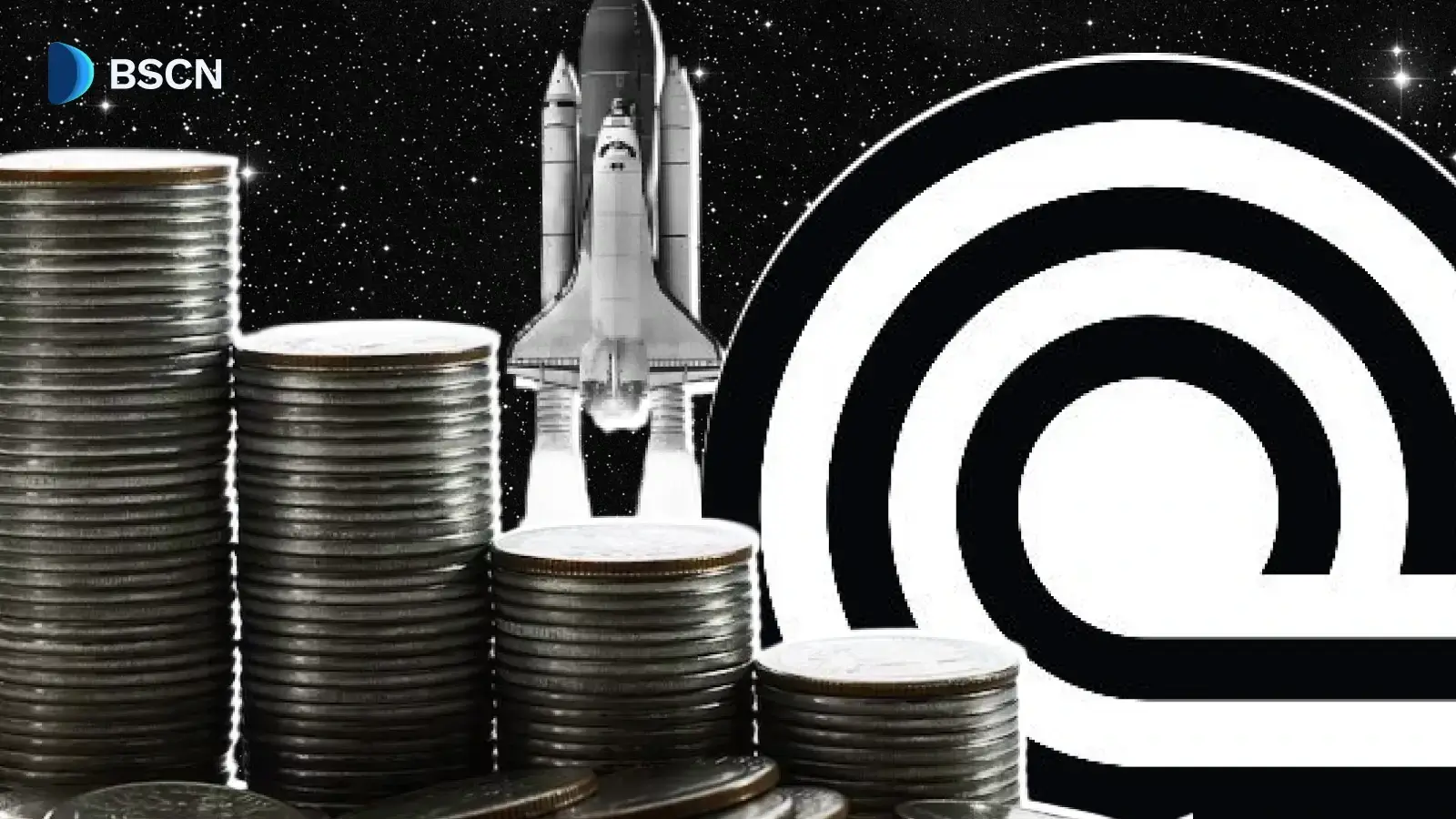News
(Advertisement)
Polkadot Community Votes to Limit DOT Tokens to 2.1B

Polkadot DAO passes Referendum 1710 with 81% support, capping DOT supply at 2.1B tokens and gradually reducing annual issuance for long-term predictability.
Soumen Datta
September 15, 2025
(Advertisement)
Table of Contents
The Polkadot Decentralized Autonomous Organization (DAO) passed Referendum 1710 with 81% support, introducing a hard cap on DOT tokens at 2.1 billion.
🚨 DOT supply → capped at 2.1 Billion 🚨
— Polkadot (@Polkadot) September 14, 2025
The Polkadot DAO has signaled support for a hard cap, by passing Referendum 1710 on the “Wish For Change” track, with 81% in favor.
Today ⤵️
→ 1.6 Billion DOT exist
→ 120M DOT/year minted each year
→ No supply cap
What Ref. 1710… pic.twitter.com/OJMtDumAZC
This replaces the prior uncapped model, which issued 120 million DOTs annually without a total supply limit. The change gradually reduces new token issuance every two years, aiming for more predictable supply and long-term alignment of tokenomics.
As of today, roughly 1.6 billion DOT exist, with 120 million minted each year under the previous system. Under Referendum 1710, the total supply will gradually approach 2.1 billion, slowing emissions and introducing scarcity.
The Mechanics Behind the Supply Cap
Referendum 1710 represents a structural shift in Polkadot’s monetary policy. Previously, DOT issuance functioned to incentivize validators and support network growth, creating an inflationary model with no total cap. With the new supply cap:
- Annual DOT issuance will be reduced every two years on Pi Day (March 14).
- By 2040, DOT supply is projected to reach approximately 1.91 billion under the new model, compared to around 3.4 billion under the prior system.
- Scarcity and predictability are now embedded into Polkadot’s tokenomics, potentially supporting long-term stability in value.
This model aligns DOT’s issuance approach with other capped assets like Bitcoin, while retaining flexibility for network incentives. By decelerating token creation, Polkadot introduces a limited supply without immediately reducing validator rewards or ecosystem development funding.
Implications for DOT Holders and Investors
The adoption of a capped supply is likely to influence market behavior:
- Predictable Emissions: Gradual reduction in new DOT creation ensures long-term alignment with network growth.
- Potential Scarcity: Limiting supply over time introduces scarcity, which could support value preservation.
- Governance Confidence: Active community participation in passing the referendum signals strong decentralized governance, reinforcing trust in Polkadot’s decision-making processes.
While price movement is never guaranteed, capped supply models have historically been perceived as reliable frameworks for value retention in cryptocurrency markets.
Community and Governance Impact
Polkadot’s governance model is fully decentralized, allowing stakeholders to vote on major network changes. Referendum 1710 illustrates several key dynamics:
- Community-Driven Policy: 81% approval indicates broad consensus among DOT holders.
- Alignment of Interests: Reducing inflation while maintaining validator incentives ensures the network remains functional and secure.
- Decentralized Decision-Making: Governance participation reinforces Polkadot’s credibility as a layer-0 protocol with strong community oversight.
Capped supply also provides a hedge against market volatility, helping stakeholders manage long-term planning for treasury management, liquidity, and regulatory compliance.
Worth noting, cryptocurrency supply mechanisms increasingly intersect with regulatory frameworks. In the U.S., agencies such as the SEC have shown caution regarding approval of crypto ETFs and other investment products. A capped supply could offer clearer projections of token availability.
By controlling token emissions, Polkadot may simplify some compliance challenges for participants operating in regulated jurisdictions.
Technological Context: Polkadot 2.0 and Network Infrastructure
Polkadot is preparing for significant upgrades with Polkadot 2.0, led by the Web3 Foundation and Parity Technologies. These upgrades aim to enhance scalability, interoperability, and network efficiency:
- Parachain Parallelization: Supports high transaction throughput across multiple blockchains.
- Shared Security: Ensures consistent protection for independent parachains.
- DAO Integration: Supply adjustments impact treasury and liquidity planning for decentralized governance.
Founded by Dr. Gavin Wood, Ethereum co-founder, Polkadot transitioned to fully decentralized governance by July 2020. Recent tests indicate the network can process at least 623,000 transactions per second, positioning Polkadot as a high-capacity infrastructure for Web3 applications.
Long-Term Effects on the Ecosystem
Referendum 1710 is more than a numeric adjustment. Its practical outcomes include:
- Emission Control: Gradual step-down reduces inflation pressure on DOT.
- Predictable Monetary Policy: Stakeholders can plan with clear issuance schedules.
- Community Stability: Transparent governance strengthens confidence in DAO operations.
These elements collectively support sustainable growth and reinforce Polkadot’s technical and economic robustness.
Resources:
Polkadot Referendum 1710: https://polkadot.polkassembly.io/referenda/1710
Polkadot docs: https://docs.polkadot.com/
Polkadot wiki: https://wiki.polkadot.com/general/faq/
Read Next...
Frequently Asked Questions
What is Referendum 1710 in Polkadot?
Referendum 1710 is a DAO proposal that caps DOT token supply at 2.1 billion, reducing annual issuance gradually every two years to control emissions.
How does this affect DOT holders?
The capped supply introduces scarcity and predictable issuance, potentially enhancing long-term stability and investor confidence without immediately impacting validator rewards.
When will the new issuance schedule take effect?
The step-down of DOT issuance occurs every two years on Pi Day (March 14), gradually slowing total supply growth toward the 2.1 billion cap.
Disclaimer
Disclaimer: The views expressed in this article do not necessarily represent the views of BSCN. The information provided in this article is for educational and entertainment purposes only and should not be construed as investment advice, or advice of any kind. BSCN assumes no responsibility for any investment decisions made based on the information provided in this article. If you believe that the article should be amended, please reach out to the BSCN team by emailing [email protected].
Author
 Soumen Datta
Soumen DattaSoumen has been a crypto researcher since 2020 and holds a master’s in Physics. His writing and research has been published by publications such as CryptoSlate and DailyCoin, as well as BSCN. His areas of focus include Bitcoin, DeFi, and high-potential altcoins like Ethereum, Solana, XRP, and Chainlink. He combines analytical depth with journalistic clarity to deliver insights for both newcomers and seasoned crypto readers.
(Advertisement)
Latest News
(Advertisement)
Crypto Project & Token Reviews
Project & Token Reviews
Comprehensive reviews of crypto's most interesting projects and assets
Learn about the hottest projects & tokens
Latest Crypto News
Get up to date with the latest crypto news stories and events













